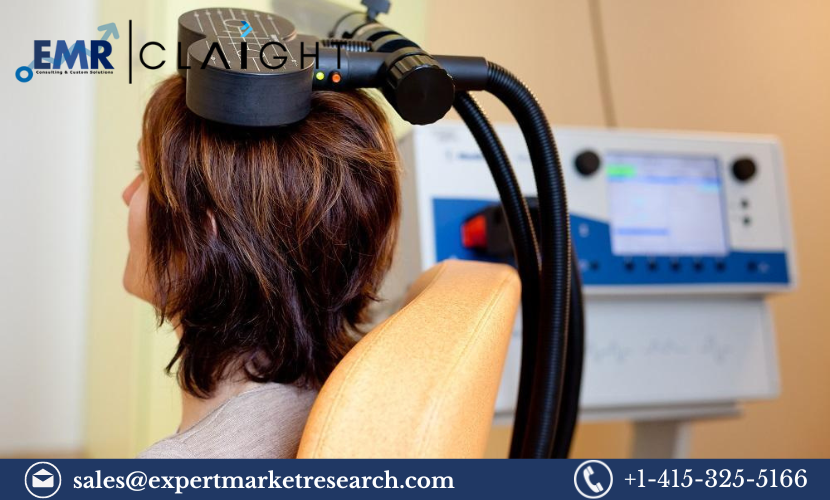Treatment-resistant depression (TRD) refers to cases where patients with major depressive disorder (MDD) fail to respond to two or more standard antidepressant therapies. Given the global prevalence of MDD—estimated to affect over 264 million people—treatment resistance poses a major challenge for healthcare systems. With the growing awareness of TRD, the global market was valued at USD 3,295 million in 2023 and is forecasted to expand at a CAGR of 6.1% during the period 2024-2032, reaching USD 5,590.5 million by 2032.
This blog delves deeper into the key drivers, innovations, challenges, and opportunities shaping the TRD market and provides insights into future market dynamics.
Market Drivers and Trends: What’s Powering Growth?
- Rising Depression Rates and Diagnosis
Depression is now one of the leading causes of disability worldwide. As awareness of mental health conditions grows, more people are seeking medical treatment for depression. However, 10-30% of patients diagnosed with depression fail to respond to conventional treatments, which has significantly driven demand for TRD therapies. The recognition of TRD as a distinct clinical condition by regulatory bodies and healthcare institutions has further elevated the urgency to develop specialized treatments. - Advanced Therapeutic Approaches for TRD
Several therapeutic breakthroughs have emerged for TRD, with novel pharmacological options, neuromodulation therapies, and psychedelic treatments gaining ground. Notable innovations include:- Esketamine (Spravato): This nasal spray, approved by the FDA in 2019, has been revolutionary in treating TRD due to its rapid-acting antidepressant properties. Unlike traditional antidepressants that take weeks to show results, esketamine works within hours or days by targeting the brain’s glutamate system rather than the serotonin or dopamine pathways.
- Ketamine-Based Treatments: Intravenous ketamine has shown significant efficacy in treating severe depression, including TRD. Studies reveal that ketamine can produce a fast-acting antidepressant effect, which has generated considerable interest among healthcare providers. However, its use remains limited due to potential side effects, such as dissociation and the need for specialized administration environments.
- Psychedelics: Clinical trials exploring the potential of psychedelics like psilocybin and MDMA (3,4-methylenedioxymethamphetamine) in treating TRD have shown promising results. Psilocybin, a naturally occurring compound found in certain mushrooms, is currently undergoing Phase 3 trials for depression treatment. MDMA has been given breakthrough therapy designation by the FDA for its potential to treat TRD and PTSD.
- Technological Advances in Neuromodulation
Neuromodulation therapies are gaining momentum as an alternative to pharmacological treatments for TRD, especially in cases where patients experience severe side effects or no improvement from medications. Some of the most promising techniques include:- Transcranial Magnetic Stimulation (TMS): TMS is a non-invasive brain stimulation technique that uses magnetic fields to stimulate nerve cells. It has become an increasingly popular treatment option for TRD and is generally well-tolerated by patients. It offers a more favorable side effect profile compared to ECT.
- Deep Brain Stimulation (DBS) and Vagus Nerve Stimulation (VNS): These are more invasive neuromodulation techniques that target specific areas of the brain and nervous system to alleviate depressive symptoms. Although still in experimental stages for TRD, these therapies offer potential long-term benefits for treatment-resistant patients.
- Personalized Medicine and Genetic Profiling
One of the most transformative trends in the TRD market is the rise of personalized medicine. Traditional antidepressant treatments often follow a trial-and-error approach, which can lead to prolonged suffering for patients. However, advances in pharmacogenomics (the study of how genes affect a person’s response to drugs) are leading to more personalized treatment plans based on genetic markers. This is expected to increase the success rates of antidepressants by predicting how patients will respond to specific medications, thus reducing the trial period.
Challenges and Restraints: Barriers to Market Growth
- High Cost of Advanced TRD Therapies
Despite the advancements in treatment options, one of the primary barriers to widespread adoption is the cost. Innovative treatments like esketamine and ketamine-based therapies are expensive, and insurance coverage varies widely across regions. For example, esketamine nasal spray treatments can cost between USD 3,000 and USD 4,500 for a four-week course, excluding additional clinic costs. This limits access for patients in lower-income brackets, despite the high efficacy rates. - Lack of Awareness and Stigma in Emerging Markets
Mental health awareness remains disproportionately low in many low- and middle-income regions. In countries with underdeveloped mental healthcare infrastructure, treatment options for depression, let alone TRD, are often limited to basic medications like SSRIs. The lack of mental health professionals, social stigma, and low funding for mental health services continue to impede market growth in these regions. - Side Effects and Safety Concerns
Many of the innovative therapies for TRD come with significant side effects that can affect patient safety and compliance. For instance:- Electroconvulsive Therapy (ECT), while effective for severe cases of TRD, is associated with memory loss and cognitive impairments.
- Ketamine and esketamine treatments, though fast-acting, can cause dissociation, hallucinations, and potential addiction risks.
- Neuromodulation techniques like DBS and VNS are invasive, requiring surgery, which poses risks like infection, bleeding, and device malfunction.
Regional Market Insights: Focus on Key Markets
- North America
The United States dominates the global TRD market, accounting for the largest share due to its advanced healthcare infrastructure, widespread mental health awareness, and higher rates of depression diagnoses. The U.S. government’s focus on mental health initiatives, such as expanded insurance coverage for mental health treatments through the Affordable Care Act (ACA), has further bolstered the market. - Europe
Europe is another significant market, with Germany, the UK, and France leading the charge in terms of mental healthcare access and treatment options. Government-funded healthcare in many European countries provides broader access to TRD therapies. However, the high cost of advanced therapies like esketamine has led to delays in widespread adoption in some regions. - Asia-Pacific
Japan and South Korea are emerging as key players in the TRD market in the Asia-Pacific region. Japan, in particular, has a growing market due to a combination of high depression rates and an aging population. However, in much of Southeast Asia, cultural stigmas and limited healthcare infrastructure continue to restrict market growth.
Competitive Landscape and Key Players
The treatment-resistant depression market is highly competitive, with leading pharmaceutical companies driving innovation through new drug approvals, clinical trials, and strategic partnerships. Some of the major players include:
- Pfizer Inc.: A leading pharmaceutical giant actively involved in TRD drug development.
- Johnson & Johnson Services, Inc.: Johnson & Johnson’s subsidiary Janssen Pharmaceuticals spearheaded the development of Spravato, a breakthrough treatment for TRD.
- Eli Lilly and Company: Known for their range of antidepressant therapies, including research into alternative treatments for TRD.
- GlaxoSmithKline (GSK) Plc: GSK is investing in novel treatment solutions, focusing on targeting the underlying mechanisms of depression resistance.
Future Outlook: What to Expect by 2032
The treatment-resistant depression market is set to experience significant growth over the next decade, driven by:
- Psychedelics and Breakthrough Therapies
The ongoing research into psychedelic-assisted therapy holds the potential to transform TRD treatment, especially with psilocybin and MDMA in advanced trial stages. Their acceptance by regulatory bodies could introduce a paradigm shift in how TRD is treated. - Digital Therapeutics and Telepsychiatry
The post-pandemic rise of telemedicine has made mental health services more accessible, particularly in remote and underserved areas. In the future, AI-powered mental health apps and online platforms could play a vital role in managing TRD, offering digital therapeutic options to complement traditional therapies. - Personalized and Precision Medicine
The adoption of precision medicine, driven by genetic profiling and AI-based treatment plans, is expected to improve the success rate of TRD therapies. Tailored treatments that reduce the need for trial-and-error medication regimens could significantly improve patient outcomes.




